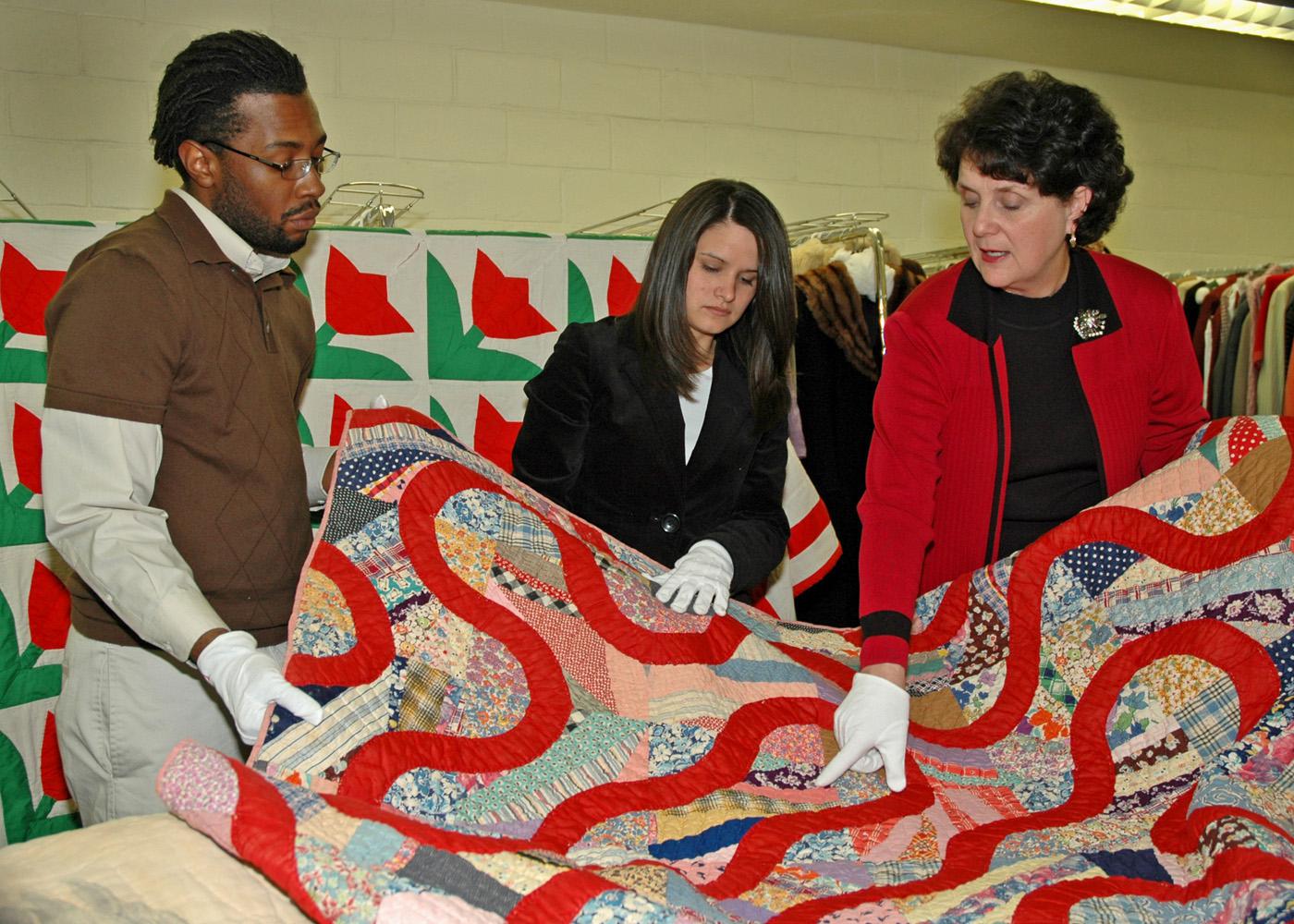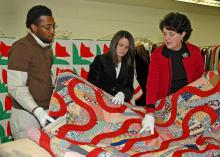Information Possibly Outdated
The information presented on this page was originally released on February 9, 2006. It may not be outdated, but please search our site for more current information. If you plan to quote or reference this information in a publication, please check with the Extension specialist or author before proceeding.
Quilts show life as it once was
MISSISSIPPI STATE -- Quilts and costumes may seem unrelated, but to apparel students at Mississippi State University, a historic quilt can be an eye-opening artifact.
|
|
At a 2005 symposium on Southern quilts, College of Agriculture and Life Sciences associate professor Wanda Cheek gave her historic costume students a chance to get their hands on some important and valuable pieces of Mississippi's history.
“I involved the students so they could look at historical artifacts in another light,” said Cheek, a faculty member in MSU's School of Human Sciences. “Working with these quilts gave them an opportunity to familiarize themselves with something that existed in an earlier time in rural and agricultural Mississippi.”
Students helped quilt owners document everything known about the quilt. Measurements were taken, stitches per inch counted, the pattern identified, and any known history of the quilt written down. They also helped mount a special quilt exhibit, “Family Quilts Passed from One Generation to the Next,” for all participants to see.
Carol Vickers has been chairman of the Mississippi Heritage Quilt Search Project, an arm of the Mississippi Quilt Association, since 1993. She has helped document 1,760 Mississippi quilts made before 1945. This information was donated to the Mississippi Department of Archives and History, and much of the findings made their way into the book Mississippi Quilts, by Mary Elizabeth Johnson.
“There are so many things you can learn from looking at the quilting in any culture,” Vickers said. “There has never been a society that has weaving that didn't have quilted pieces. A quilt is defined as any three layers that are stitched together, and even the Egyptian museum in Cairo has quilted pieces from the time of Moses.”
Vickers said quilting has always flourished during difficult times, and while it typically is more common in rural areas, quilts are made at all levels of society. Currently, Japan is one of the world's hotbeds of quilting activity.
“Historically, women in rural areas did not have many social outlets beyond church and maybe school activities,” Vickers said. “When they got together to quilt, they shared recipes, gossip, quilt patterns, how to get along with your husband. It was a very important part of their lives emotionally.”
Quilts also can serve as economic barometers. If all the colors match in an antique quilt, Vickers said it was made by an affluent family who had the money to buy fabric specifically for the quilt. Poor families made quilts from what they had, using feed and fertilizer sacks or other scraps of material on hand. At least one quilt that includes material from a horse feed sack features an illustrated horse on the quilt backing.
In east Mississippi, many historical quilts have wool batting rather than cotton.
“Cypress weed invaded that part of the state and sheep would eat it, so sheep were brought in,” Vickers said. “The women weren't going to let the wool go to waste, so they used it in their quilts.”
MSU's apparel, textiles and merchandising degree is broad-based, and students are immersed in all areas of apparel. Students studying historic clothing and costume design can learn a lot from the quilts. They can learn the patterns that were popular at different times in history, can admire the handiwork done with and without machines, and can see how changing economic times affected quilts. They also can practice conservation and preservation methods with these historical artifacts.
Cheek said the department is working with the Consortium for the History of Agricultural and Rural Mississippi, or CHARM, and others to bring more educational opportunities such as this to the students and the community.
“Quilts reflect the life and what is going on with the people,” Cheek said. “They are an important sociocultural artifact.”



